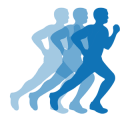A cramp in the hamstring muscles refers to a painful and involuntary muscle contraction. While leg cramps typically resolve on their own, they can potentially cause muscle damage and subsequent soreness and tenderness.
Medically reviewed by Dr Chaminda Goonetilleke, 21st Feb. 2021
Symptoms of a hamstring cramp
Experiencing Cramps:
- Involves a forceful involuntary contraction of the hamstring muscles.
- Pain can be severe, hindering knee straightening.
- Post-cramp symptoms may include muscle tenderness, soreness, or potential strain or rupture.
Causes of cramps in the hamstring muscles
The precise cause of cramps is not fully understood, but several potential triggers include altered neuromuscular control, muscle fatigue, genetic predisposition, dehydration especially under hot conditions from inadequate water intake, low levels of potassium or sodium (salt), carbohydrate depletion, and very tight hamstring muscles.
It’s important to note that current research does not fully back the idea that dehydration and electrolyte depletion are direct causes of cramps.
Hamstring muscles
During cramps, athletes undergo involuntary, painful spasms in the hamstring muscles – semitendinosus, semimembranosus, and biceps femoris – situated at the back of the thigh.
Muscle strains from cramps
Hamstring cramps can cause muscle damage due to intense contractions leading to muscle fibre tears, resulting in a hamstring strain. Despite most cramp-induced strains being typically mild, some residual pain may persist post-cramp.
Treatment for a hamstring cramp
Cramp Relief Strategies:
Stretching: Hold stretches on affected muscles as long as necessary, potentially with a partner’s help.
Sports Massage: A gentle massage on the hamstring and other leg muscles can aid in relief by promoting blood flow and muscle relaxation. If a muscle tear is present, postpone deep tissue massage until after the initial 24 to 48 hours.
Foam Rolling: If a massage isn’t an option, foam rolling can be effective. Include it in your warm-up for best results.

